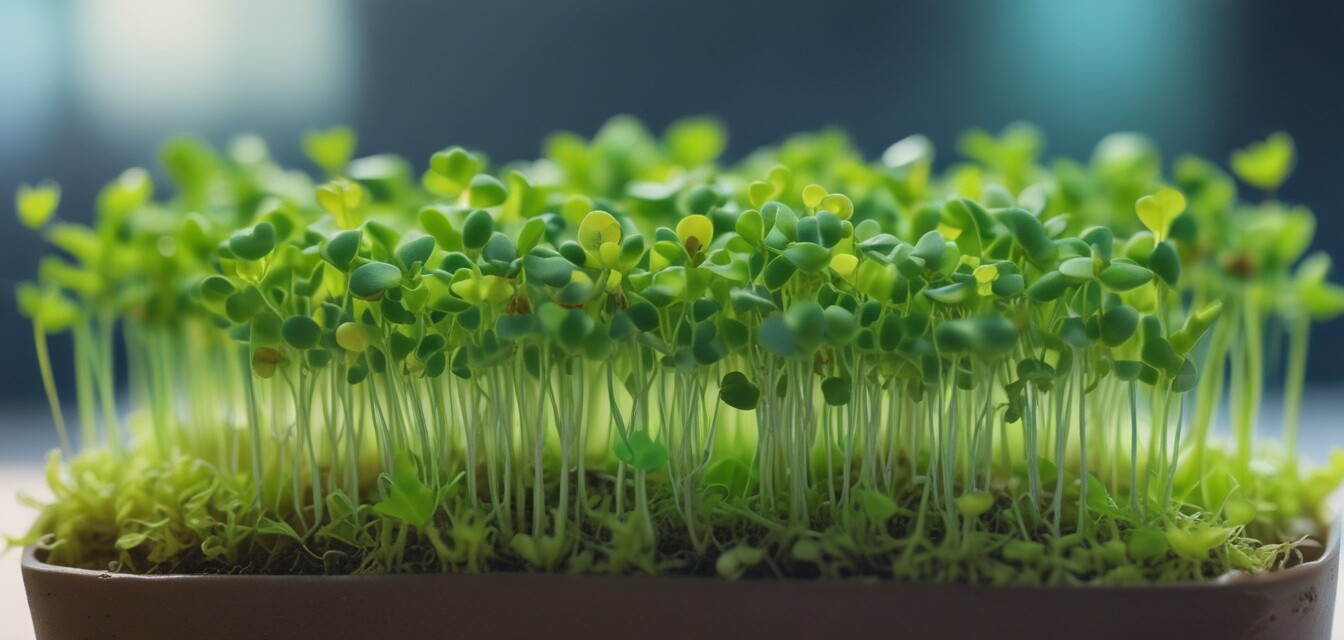
Hydroponic microgreens: A simple grow guide
Key Takeaways
- Microgreens are nutrient-dense plant shoots harvested shortly after germination.
- Hydroponic systems efficiently grow microgreens without soil, using nutrient-rich water.
- Key light requirements include 12-16 hours of light daily, preferably using LED grow lights.
- Common varieties include basil, radish, and sunflower microgreens.
- Harvest microgreens between 7-21 days, depending on the variety for optimal flavor and nutrition.
Microgreens are becoming increasingly popular among home gardeners and culinary enthusiasts alike. These tiny greens are packed with flavor and nutrients, making them a perfect addition to salads, sandwiches, and more. In this guide, we will cover the basics of growing hydroponic microgreens, providing you with practical tips to ensure a successful harvest.
What are microgreens?
Microgreens are young plant shoots that are harvested just after the first true leaves (cotyledons) appear. They are smaller than baby greens but pack an intense flavor and significant nutritional benefits. Grown hydroponically, microgreens can be cultivated in urban settings or small spaces, making them an excellent candidate for anyone looking to delve into hydroponic gardening.
Benefits of growing hydroponic microgreens
- Nutrient-rich: Microgreens contain higher nutrient levels compared to their mature counterparts.
- Fast grow cycle: Many varieties can be harvested within 7-21 days.
- Space-efficient: They require minimal space and can be grown indoors.
- Sustainable: You use less water and no soil, making them an eco-friendly gardening choice.
Getting started: Equipment and materials
Before you begin growing hydroponic microgreens, it's essential to gather the right equipment and materials. Here’s a simple checklist:
| Equipment | Description |
|---|---|
| Containers | Shallow trays or containers (seed starting trays work well) for planting. |
| Growing medium | Choose between coco coir, rock wool, or hydroponic mat for a soil-less base. |
| Nutrient solution | Hydroponic nutrient solutions provide essential nutrients for your microgreens. |
| Light source | Utilize LED grow lights to ensure your microgreens receive sufficient light. |
| Watering supplies | Use a spray bottle or gentle watering can to avoid overwatering. |
Choosing the right microgreens
There are numerous varieties of microgreens suitable for hydroponic gardening, each offering unique flavors and textures. Some popular options include:
- Basil
- Radish
- Sunflower
- Pea shoots
- Broccoli
Growing process
Follow these simple steps to successfully grow your hydroponic microgreens:
- Prepare the containers: Fill your containers with the chosen growing medium, leaving about an inch from the top.
- Sow the seeds: Scatter seeds evenly across the growing medium. For denser varieties, allow seeds to touch.
- Watering: Mist the seeds gently with water to ensure they are evenly moist.
- Cover and germinate: Darken the trays with a cover until germination (about 3-7 days).
- Light exposure: After seeds germinate, place them under grow lights for 12-16 hours a day.
- Harvesting: Use scissors to cut microgreens just above the growing medium once they reach 2-3 inches tall.
Light requirements
Light is crucial for growing hydroponic microgreens effectively. Here's what you need to know about light requirements:
- Microgreens need 12-16 hours of light daily.
- LED grow lights are energy-efficient and provide the necessary spectrum for growth.
- Position the lights 2-4 inches above the microgreens and adjust as they grow.
Common issues and solutions
While growing hydroponic microgreens is relatively straightforward, you might encounter a few challenges. Here are some common issues and their solutions:
| Issue | Solution |
|---|---|
| Mold growth | Ensure adequate airflow and avoid excess moisture on the growing medium. |
| Leggy plants | Move lights closer or increase light exposure duration. |
| Uneven growth | Rotate trays and ensure even light distribution. |
Caring for your microgreens
Proper care during the growing process is essential for healthy microgreens. Here are some tips:
- Keep the growing medium consistently moist but not soggy.
- Maintain a temperature between 65-75°F for optimal growth.
- Watch for pests and take swift action to prevent infestations.
Conclusion
Growing hydroponic microgreens is an incredibly rewarding and manageable DIY project. With the right setup, you can enjoy a harvest of fresh, flavorful greens in just a few weeks! Whether you're upgrading your salads or experimenting with new flavors, microgreens make excellent additions to any dish.
Tips for success
- Experiment with different varieties to find your favorites.
- Keep a journal to track your growth progress and methods.
- Try combining microgreens in salads for a variety of flavors.
Pros
- Quick and easy to grow.
- Energy-efficient methods available.
- Can be grown year-round regardless of climate.
Cons
- Limited shelf life once harvested.
- Requires attention to maintain optimal growing conditions.
For more information related to gardening techniques, check out our buying guides to ensure you’re equipped with the best tools for your setup. Explore our other DIY projects to expand your gardening creativity!

